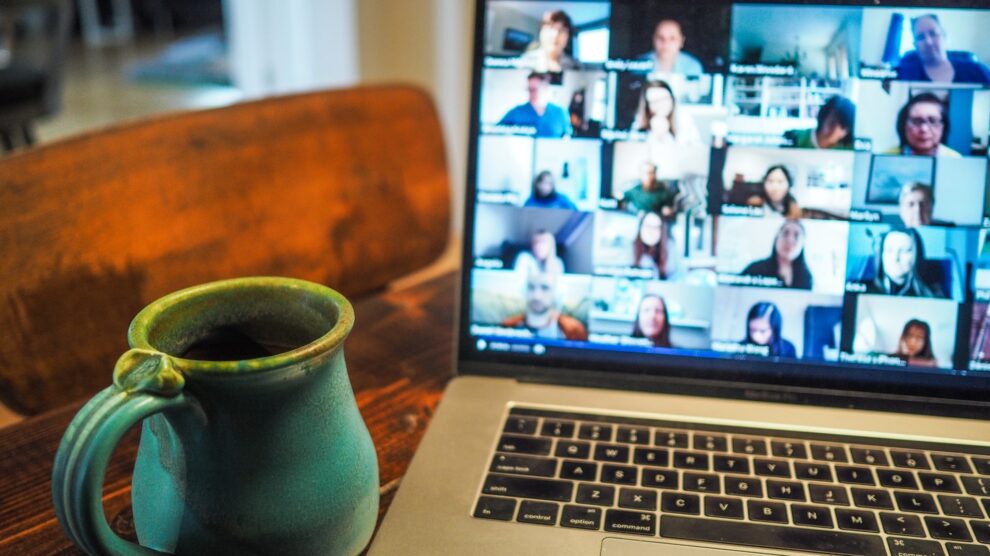The COVID-19 pandemic has produced a way of life in which many individuals now work and socialize primarily from home. A survey conducted at the start of the quarantine found that about 62 percent of those asked supported the quarantine – the vast majority of Americans who were working worked from home. Even if the situation improves, the majority of survey respondents desire to continue working from home. Generally speaking, the remote workforce was already growing at a rapid pace, increasing by 140 percent between 2000 and 2010. The pace of growth has accelerated from 2005 to 2019. Video conferencing has become the most popular method for social gatherings. Zoom may be used for anything from weddings to happy hours to funerals. Zoom, Microsoft Teams, Google Hangouts, and other comparable programs have made a virtual living, cooperation, and productivity possible. However, these technologies (together referred to as “Zoom”) may have an influence on how people view themselves. People are becoming more mindful of how they show themselves to others as they are forced to confront their looks on camera for hours every day. They may be disturbed by what they see. Even more disturbing is that the image is slightly distorted because of the technology’s intrinsic characteristics.
Prior to Zoom, a plethora of photo-editing apps allowed people to smoothen their complexion, narrow their nose, and widen their eyes to create a filtered image of themselves as desired. Peope sent doctored-up selfies to their aestheticians, seeking changes to their appearance that were frequently beyond the capabilities of even the most sophisticated cosmetic surgery. Because of its proclivity to precipitate or exacerbate body dysmorphic disorder (BDD), this condition, known as Snapchat dysmorphic disorder, has sparked considerable concern. In contrast to Snapchat, where people purposefully alter their image, Zoom dysmorphia BDD may be triggered by prolonged staring and self-reflection on a subconsciously distorted image (i.e., elements of the technological interface and front-facing cameras in video-conferencing can misrepresent face structure, causing issues with one’s own appearance).
According to the dermatologists polled, neuromodulators (such as Botox and Dysport), dermal filler injections, and laser treatments are the most commonly requested aesthetic treatments in their clinics. In an era when surgical treatments are limited because of the risk of viral transmission, a greater desire in non-surgical techniques is anticipated. Patients seem to be more focused on areas above the neck, including the forehead/glabella, eyes, neck, and hair. Upper-face wrinkles, circles/bags beneath the eyes, dark patches, and neck drooping are all issues to be concerned about. Concerns below the neck were mentioned considerably less often, with body contouring and cellulite treatments acknowledged to be on the increase by 10% of the dermatologists polled. An examination of Google search patterns during the COVID-19 epidemic revealed an increase in search keywords such as “acne” and “hair loss”. The surge is explained by the link between acne and hair loss and anxiety and despair, two psychological disorders that plague many isolated people. Numerous additional variables, such as mask occlusion producing acne and the connection of telogen effluvium with COVID-19 infection, may also play a role. It is suggested that the increase may also be attributable to individuals being more conscious of their looks, analyzing their features from the neck up as they see their video reflection on a regular basis.





